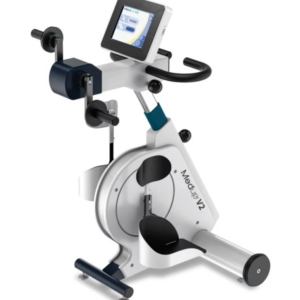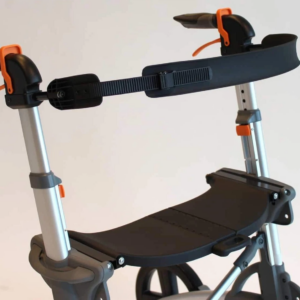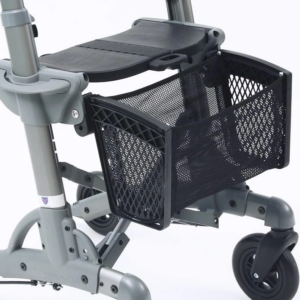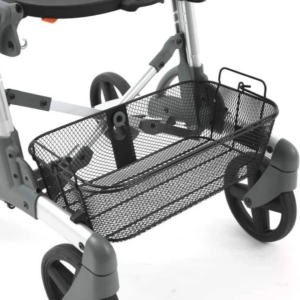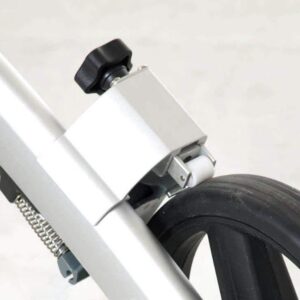
If you or a family member is reaching the point where using a walker might be a consideration, there are a number of things to think about before investing in one. With several different models available it can be hard to narrow down exactly which style is best for the situation. While the standard walker is the one most people picture when they hear the word ‘walker’, a newer version called a ‘rollator’ is taking over as the preferred choice amongst many walker users. There are several advantages to choosing a rollator rather than a standard walker, but you should always discuss it with your doctor if you are unsure which one would be best.
When do I need a walker?
There are a few signs that you might be ready to have a discussion about using a walker, though it’s understandable if you’re shying away from the conversation. Though you should discuss the options with your doctor, a few signs that it might be time to bring it up include:
- Feeling short of breath when walking, whether it’s over short distances or longer ones
- Finding yourself needing to sit to catch your breath
- Arthritic pain that prevents you from walking
- Struggling to walk and carry something at the same time
- A fear of falling
- You find your legs to be unreliable. This can be the result of an injury like a broken bone or a hip replacement, arthritis pain or any sores on your legs
- You struggle to maintain balance
- You want to maintain independence and mobility
Differences between a Rollator and a Standard Walker
Simply speaking, the biggest difference between a standard walker and a rollator is that a standard walker has 4 legs and it needs to be lifted up with each step, while a rollator has 3 or 4 wheels and can be pushed along in front of the user.
A walker is designed to hold a person’s partial body weight, but a rollator is not meant to hold any. The rollator is designed to be a support for someone who gets tired easily, whether after a surgery or just as a general condition. A walker will help provide support for those who lose their balance easily and need help maintaining it.
Advantages to using a Rollator Walker
There are many advantages to using a rollator walker over a standard one, with most of those advantages circling back to the portability and ease of use of the rollator walker. While a rollator might not be well suited for everyone that needs a walker, it is certainly a great choice if your situation allows for it.
1. Wheels rather than legs
If you need something that comes with you to help alleviate tiredness, a rollator is perfect. The wheels on this walker allow it to easily move along in front of you without forcing you to lift it up with every step. This means that the need to steady yourself before lifting the walker is eliminated, letting you focus on the world around you rather than every single step.
2. Easy to apply hand brakes
Having wheels on each leg might make you nervous that the rollator could roll itself away from you, but with an easy to apply hand brake on every model, this worry is gone. Just lightly squeeze the handle pulls to apply the brake as needed. Most models also have a parking brake that keep the brake applied indefinitely.
Did you know Volaris offers a braking accessory called the “Slow Down Brakes“? It allows users to apply friction while moving for those wanting the rollator to move with a little bit of resistance (adjustable). It’s especially useful on graded terrain for maximum, custom control!
Xlent Care is the exclusive seller of Volaris rollator walkers in the USA & Canada.
3. Clean and compact, portable design
Rollators are designed to move around with you, so the cords and wires that connect the brake to the wheels are often hidden inside the frame to avoid getting caught on anything.
Standard walkers are all pretty much the same shape and design, so a lightweight and compact unit like the rollator can fit into tighter spaces. The easily maneuverable design offers increased portability over the standard walker.
4. Tall frame with height adjustments
Walking upright has been shown to increase energy levels and promote easier breathing, so a rollator with a tall frame will help you not only move around better, but to also feel better doing it. The adjustable height settings on a rollator mean that the unit can be used by a wide demographic.
5. A cushioned seat
Since you likely get fatigued easily, having a seat available to take a rest whenever you need will help you recover quicker and maintain mobility longer. The ability to apply the brakes and sit at any moment is an advantage that most who use a walker can appreciate.
6. All terrain wheels
Many models come with all terrain wheels which allow for an easy transition between moving around outdoors and taking the rollator indoors. Rollator tires are generally made of a non-marking material so you can rest assured that the wheels won’t scuff up your floors when bring it inside. This versatility helps ensure you are comfortable and can enjoy a mobile life both outdoors and in.
For Freedom, Safety and Health – a rollator is the best choice
Though making the decision to accept help with such a basic skill like walking can feel intimidating, you are no longer limited by the traditional walker. Using a rollator walker can help you maintain an active and independent lifestyle by providing support when you want it, a chance to rest when you need it, and the ultimate options in portability. No longer are you restricted to dragging around a clunky walker when you just aren’t at the level of needing it yet. A rollator walker offers an easy transition into a mobility assisted lifestyle.







